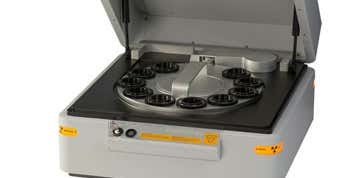Welche Verfahren werden bei der Polymeranalyse eingesetzt?
Die Anwendungsvielfalt bei Polymeren ist immens, und dementsprechend sind auch Verfahren zur Polymeranalyse weit verbreitet. Bevor Polymermaterialien und -produkte vom F&E-Labor zur Produktionslinie oder von der Produktionslinie zum Endkunden gelangen, sind Qualitäts- und Leistungsprüfungen unverzichtbar.
Ob Sie nun mit Röntgenfluoreszenz (XRF) durch Prüfung des Katalysatorgehalts bestimmen, wie Polymerketten aufgeteilt sind, die Kristallinität mit Röntgendiffraktion (XRD) überwachen oder Partikelgröße und Morphologie mit Laserbeugung und statischer Bildanalyse überprüfen, Malvern Panalytical bietet hochmoderne Lösungen für alle Anforderungen an die moderne Polymeranalyse.
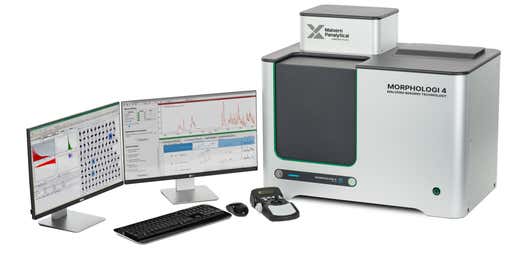
Morphologi 4-ID
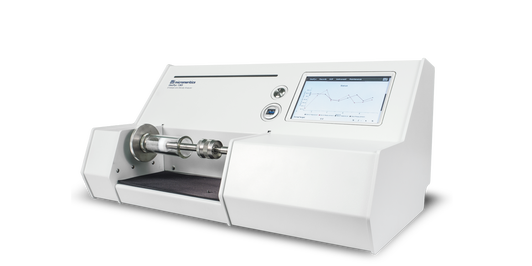
Micromeritics GeoPyc
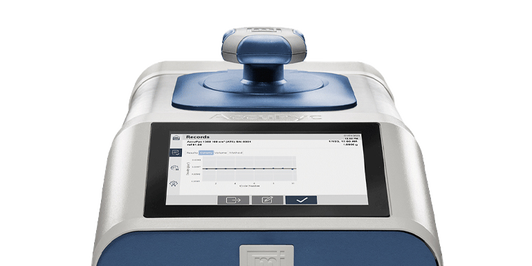
Micromeritics AccuPyc

SciAps X-Serie
Röntgenfluoreszenz-Analyse von Polymeren
Die Röntgenfluoreszenz (XRF) ist ein bewährtes grundlegendes Analyseverfahren, das in vielen Branchen zum Einsatz kommt. Wenn Röntgenstrahlen in einem Material auf Atome treffen, geben die Atome fluoreszierende „Fingerabdrücke“ ab, die auf die Elementzusammensetzung des Materials hinweisen. Diese Daten sind entscheidend für die Einhaltung globaler Richtlinien wie RoHS-3, WEEE und ELV im Hinblick auf toxische Metallteile.
Malvern Panalytical bietet sowohl hochmoderneXRF-Instrumente als auch Referenzmaterialien zur Polymercharakterisierung, einschließlich ADPOL zur Analyse von Zusatz- und Füllstoffen sowie TOXEL zur präzisen Analyse toxischer Elemente.

SciAps X-Serie
- Anwendungsbereiche
- Beim Kunststoffrecycling wird mithilfe von XRF die Elementzusammensetzung von recycelten Polymeren ermittelt und quantifiziert, um sicherzustellen, dass Verunreinigungen und Additive innerhalb akzeptabler Grenzen liegen. Das ist entscheidend, wenn es darum geht, die Verarbeitungsbedingungen zu optimieren, die Produktqualität beizubehalten und gesetzliche Vorschriften einzuhalten.
- XRF hilft auch bei der Lokalisierung von Verunreinigungen, die sich negativ auf die mechanischen und thermischen Eigenschaften von recyceltem Kunststoff auswirken können, und führt so letztendlich zu Verbesserungen bei Sortier- und Verarbeitungsmethoden.
- Durch präzise elementare Charakterisierung wird sichergestellt, dass Katalysatoren die korrekte Zusammensetzung und optimale Verteilung der aktiven Zentren aufweisen, die für hohe Effizienz und Selektivität bei chemischen Reaktionen unerlässlich sind. Mithilfe von XRF lassen sich Katalysatorformulierungen feinabstimmen, die Katalysatordeaktivierung überwachen und Materialien entwickeln, die robuster und umweltfreundlicher sind.
Röntgendiffraktionsanalyse von Polymeren
Die Untersuchung der Kristallstruktur und Phasenzusammensetzung von Polymeren ist entscheidend für das Verständnis und die Optimierung ihrer Leistungsmerkmale. Die Anordnung kristalliner und amorpher Bereiche innerhalb eines Polymers beeinflusst neben anderen Eigenschaften unmittelbar seine mechanische Festigkeit, thermische Stabilität und chemische Beständigkeit.
Die Angebotspalette zur Röntgendiffraktion (XRD) von Malvern Panalytical umfasst zwei branchenführende Röntgendiffraktometer: Aeris und Empyrean.
Aeris
- Aeris ist ein kompaktes XRD-System, das auf Vielseitigkeit, hohe Datenqualität und Reproduzierbarkeit ausgelegt ist.
- Es ist die perfekte Lösung für Laborleiter, Hochschulprofessoren und Fertigungsfachleute, die kristalline Eigenschaften in einer Vielzahl von Proben unterschiedlicher Art messen müssen.
- Mit Aeris profitieren Benutzer von der Genauigkeit und Leistungsfähigkeit eines großen Standmodells – und zwar ohne hohe Betriebskosten oder den Bedarf an spezialisiertem Fachwissen.
Empyrean
- Das Empyrean-System ist auf hochmoderne Datenqualität ausgelegt, einschließlich der viel anspruchsvolleren Anwendungen mit harter Strahlung.
- Es ist die Universalplattform schlechthin, die zu jedem Probentyp Daten von höchster Qualität bereitstellt. Dieses System umfasst in einem einzelnen Gerät ein umfangreiches Set an Anwendungen zur Röntgendiffraktion, Streuungsanalyse und Bildgebung.
Beide Instrumente zeichnen sich durch ein wichtiges Merkmal für die Polymerbestimmung aus: Sie sind ganz einfach mit Hardware-Ergänzungen und neuer Software modifizierbar. So lässt sich beispielsweise Aeris dank seines modularen Aufbaus problemlos mit Erweiterungen und Zubehör ergänzen, während das PreFIX-Konzept von Empyrean die Möglichkeit bietet, ganz ohne aufwändige Neujustage zwischen verschiedenen Konfigurationen zu wechseln und so die Vorzüge unerreichter Flexibilität zu genießen.
Mit dieser Flexibilität ist auch ein höheres Maß an Nachhaltigkeit möglich. Da Mikroplastik zunehmend problematisch ist, werden künftige Vorschriften voraussichtlich die Anforderungen an Polymeruntersuchungen verschärfen, um Umweltschäden zu vermeiden. Die zukunftssicheren XRD-Instrumente sind für neue Analysemethoden bereit und bieten tiefere Einblicke in die Umweltauswirkungen von Polymeren.
- Anwendungsbereiche
- Bei der Forschung und Entwicklung lässt sich durch die Analyse der kristallinen Struktur eines Polymers vorhersagen, wie es sich unter verschiedenen Verarbeitungs- und Umgebungsbedingungen verhält.
- Diese Erkenntnisse sind auch entscheidend, wenn es darum geht, gleichbleibende Qualität bei der industriellen Fertigung sicherzustellen.
- Die Phasenzusammensetzung zu verstehen hilft bei der Erkennung potenzieller Mängel und verbesserungswürdiger Bereiche. Letztlich wird dadurch die Innovation bei der Gestaltung und Entwicklung fortschrittlicher Polymermaterialien gefördert.
Laserbeugung für Polymer- und Mikroplastikanalysen
Mastersizer Serie
Die cleverste Methode zur Messung der Partikelgröße
Die Analyse der Partikelgrößenverteilung spielt bei Polymeren eine entscheidende Rolle, da sie wesentliche Einblicke in Rohstoffe und Endprodukte bietet. Mit diesem Analyseverfahren bestimmen Sie den Größenbereich von Partikeln und deren Verteilung – Eigenschaften, die unmittelbaren Einfluss auf die mechanischen, thermischen und chemischen Eigenschaften des Polymers haben.
Laserbeugung misst die Winkelabweichung der Intensität gestreuten Laserlichts und gewinnt dadurch Informationen zu Größenverteilungen. Der Mastersizer 3000 ist ein vielseitiges, kompaktes Gerät, das auf die analytischen Anforderungen und anspruchsvollen Arbeitsabläufe in modernen Laboren zugeschnitten ist.
- Anwendungsbereiche
- Bei der Untersuchung von Rohstoffen sind genaue Informationen zur Partikelgröße Garant dafür, dass die Zusatz- und Füllstoffe in puncto Einheitlichkeit und Leistung die nötigen Spezifikationen erfüllen – was entscheidend für gleichbleibende Produktionsergebnisse ist.
- Bei der Herstellung kommt es zur Beibehaltung der Prozesssteuerung entscheidend auf die Überwachung der Partikelgrößenverteilung an, denn Abweichungen können auf potenzielle Probleme wie Agglomeration oder ungeeignete Mischverhältnisse hinweisen, die sich letztlich auf das Verarbeitungsverhalten des Polymers auswirken.
- Hersteller von Polymersuspensionen und kolloidalen Polymerlösungen können überprüfen, ob das Polymer die gewünschten Leistungskriterien und Branchenstandards erfüllt, um Zuverlässigkeit und Funktionsfähigkeit in der praktischen Anwendung sicherzustellen.
Polymermorphologie-Analyse
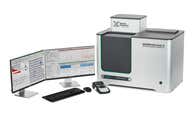
Morphologi 4-ID
Schnelle, automatisierte, komponentenspezifische Partikelcharakterisierung...
Die Polymermorphologie ist entscheidend bei der Bestimmung, wie sich Anordnung, Verzweigung und Molekulargewicht von Polymerketten auf die strukturellen und mechanischen Eigenschaften eines Polymers auswirken. Die Verteilung der Molekulargewichte und die Verzweigungen sind besonders wichtig.
Die Anordnung von Polymerketten – einschließlich des Verzweigungsgrads und der Verteilung von Molekulargewichten – spielt eine wichtige Rolle bei der Bestimmung von Eigenschaften wie mechanischer Festigkeit, Viskosität, thermischem Verhalten und chemischer Beständigkeit. Beispielsweise kann die Verzweigung Einfluss darauf haben, wie Polymerketten interagieren und sich verschlaufen, was sich wiederum auf Dichte und Flexibilität des Materials auswirkt. Ebenso haben Variationen des Molekulargewichts Einfluss auf die Verarbeitungsfähigkeit und die Gesamtleistung des Polymers, wobei höhere Molekulargewichte häufig zu mehr Zähigkeit und Festigkeit führen.
Das Morphologi 4-ID ist speziell auf die Analyse von Polymeren zugeschnitten. Es bietet detaillierte morphologische Beschreibungen von Partikelproben durch statische Bildanalyse, wodurch die Messung verschiedener Parameter wie Partikelgröße und -form möglich ist. Dieses System ist besonders wirksam bei der Charakterisierung von Polymerpartikeln, einschließlich solchen, die in Anwendungen wie Pulverbett-Schmelzverfahren zum Einsatz kommen.
Das Morphologi 4-ID kombiniert automatisierte Bildgebung mit Funktionen zur chemischen Identifikation und ermöglicht so umfassende Analysen von Polymerstrukturen und -eigenschaften, die zur Optimierung der Materialleistung in verschiedenen Anwendungen unverzichtbar sind.
- Anwendungsbereiche
- Durch die Untersuchung morphologischer Parameter lässt sich das Verhalten von Polymeren unter verschiedenen Bedingungen vorhersagen und beeinflussen, was letztlich die gezielte Gestaltung von Materialien für bestimmte Anwendungen ermöglicht.
- Diese Funktion kann auch dazu genutzt werden, in der gesamten Produktion gleichbleibende Qualität zu gewährleisten.
Unser Fachwissen
Mit ihrer Vielzahl einzigartiger Eigenschaften spielen neue und fortschrittliche Polymere eine wichtige Rolle bei der Entwicklung nachhaltigerer Materialien. Zur Entwicklung, Herstellung und Qualitätssicherung dieser Polymere sind die modernsten Werkzeuge und Fachkenntnisse erforderlich. Daher steht Ihnen Malvern Panalytical als Partner mit Rat und Tat zur Seite.
Unsere Anwendungsspezialisten sind Experten auf ihrem Gebiet und helfen gerne dabei, Ihre Fachkenntnisse mit unserer Messkompetenz zu kombinieren. Von der Geräteausstattung über Bedienerschulungen bis hin zur Unterstützung bei der Probenvorbereitung und Wartung – wir unterstützen Sie in jeder Phase der Polymerentwicklung und -fertigung.

